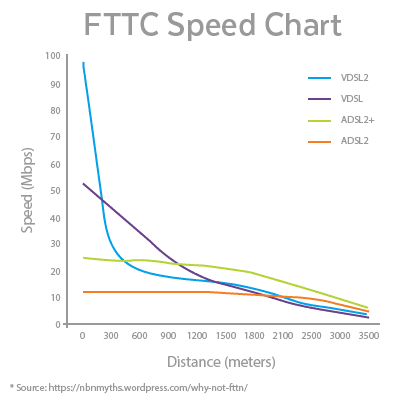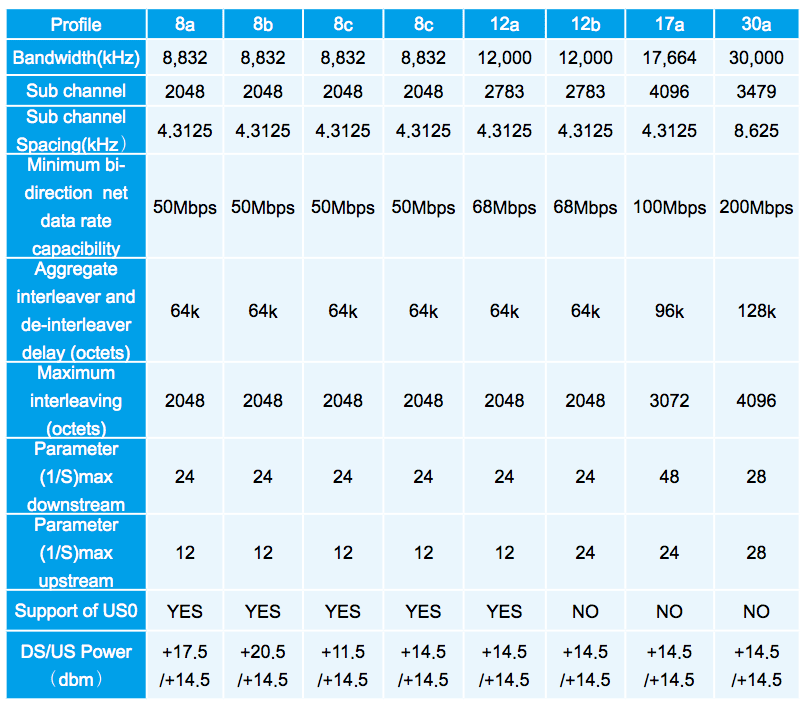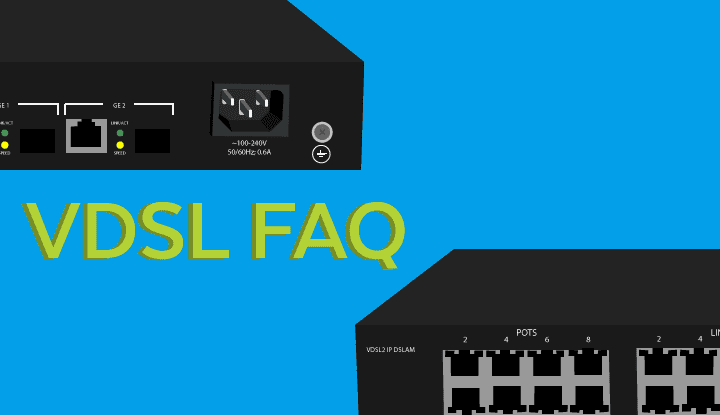We’ve compiled a list of the most commonly asked questions about VDSL & VDSL2. If you’re interested in learning more about ADSL and ADSL2+, visit our ADSLs/2+ FAQ here.
1. What is VDSL/VDSL2?
VDSL, or Very-High-Bit-Rate Digital Subscriber line, allows Internet Service Providers to provide fast connection speeds via legacy copper lines. VDSL and VDSL2 can provide faster broadband performance when compared to ADSL/2+ up to approximately 1.5km distances. After 1.5 km distances, VDSL2 exhibits performance rates comparable to ADSL2+.
2. How fast is VDSL in comparison to VDSL2?
VDSL speeds vary depending on copper loop lengths and other factors in a networking environment. Pair-bonding is another factor that influences VDSL speeds. VDSL can support downstream and upstream rates of 100 Mbps. VDSL2 on the other hand, can reach theoretic downstream and upstream data rates of up to 200 Mbps at its source. VDSL2 also supports a wider frequency range of 30 MHz in comparison to VDSL’s 12 Mhz frequency range. Both VDSL generations quickly deteriorate after certain distances. At 1 km, both VDSL versions begin to exhibit similar speeds. At approximately 1.6 km, VDSL performance becomes comparable to ADSL2+.

3. What is the farthest distance VDSL2 can reach?
The maximum range for VDSL2 is approximately 1,200 meters. After approximately 1600 meters, VDSL2’s performance quickly deteriorates yielding speeds comparable to ADSL2+.
4. How does VDSL2 achieve higher data rates than VDSL and ADSL2/2+?
Copper loop lines are susceptible to signal attenuation and copper loop lengths which limit fast transmission speeds. To achieve data rates over 100 Mbps, VDSL2 relies on port-bonding and vectoring.
5. What is pair-bonding?
VDSL2 supports the capability of bonding two or more twisted copper pairs to increase banding. But pair-bonding also functions to extend the reach of a copper network. Two DSL Line circuits that connect to a customer’s modem can be bonded. Or as explained by Ospmag, pair-bonding requires 2 VDSL2 lines which “can be combined into a “virtual “gig pipe” that allows operators to double the bitrate for existing subscribers.”
Pair-bonding can be compared to adding more lanes to a freeway so that it can support more traffic. This enables Internet Service Providers (ISPs) to offer different data rate packages to subscribers.
6. What is VDSL2 Vectoring?
VDSL2 uses vectoring to remove crosstalk and interference reduces actual performance. VDSL2 measures crosstalk from all lines in a network and applies anti-phase signals to cancel out noise. VDSL2 vectoring works in similar fashion to noise-cancelling headphones. Crosstalk allows VDSL2 speeds to achieve longer distances than VDSL. Assia Inc. specifies that “Vectored VDSL is most suitable for deployment from a node, and is the most economical in terms of required capital expenditure.”
7. What is the purpose of the different VDSL2 profiles?
VDSL2 supports 8 distinct “profiles” with varying maximum downstream and upstream throughput as well as different bandwidth frequencies and transceiver power.
Different profiles are optimal for different deployment scenarios.
For example, profiles 8a-8b and 12a-12b are ideal for Fiber to the Node (FTTN) deployments. Profiles 17a can be used for Fiber to the Cabinet (FTTCAB), and Fiber to the Building (FTTB) can utilize profile 30a.

8. Do you recommend using 2 different VDSL2 profiles on distinct modems connected to a DSLAM?
Having a cable bundle consisting of 2 or more VDSL2 profiles will exhibit intermittent sync, port status errors and poor performance. The 30a profile will run on 30 Mhz while the 17a profile will run on 17Mhz. The 30a profile can “bleed” over to the 17a profile. Many chipset manufactures such as Broadcom have stepped away from VDSL2 30a due to this very reason.
Our recommendation is to force all subscriber interfaces to sync at 17a if you have modems that do not support 30a. Users shouldn’t have an issue if all ports are synced on the same VDSL2 profile.
9. Are VDSL2/2+ units compatible with previous versions of VDSL2?
VDSL2 units are backwards compatible with VDSL Units. When a VDSL2 unit is connected to a compatible VDSL unit, VDSL2 bandwidth will revert to VDSL’s maximum supported 12Mhz frequency range.
10. Are there faster DSL technologies than VDSL2?
Yes! G.Fast is a standard still in development that has shown the ability to transmit gigabit speeds using legacy copper lines in laboratory settings. Openreach, the dominant telecom provider in the UK, is spearheading the new technology, deploying trial runs to determine if the new technology is commercially viable. However, G.Fast, like VDSL, is only effective in deployments where customer premises reside near cabinets.
To learn more about G.Fast, click here.
Take Our Poll!
If we were to roll out a new G.Fast DSLAM, how many ports would it ideally support?
Related Posts:
- The 11 Most Frequently Asked Questions About ADSL2 & ADSL2+ Answered
- A Quick Guide to 6 xDSL Technologies in Use Today
- Different xDSL Equipment Overview

